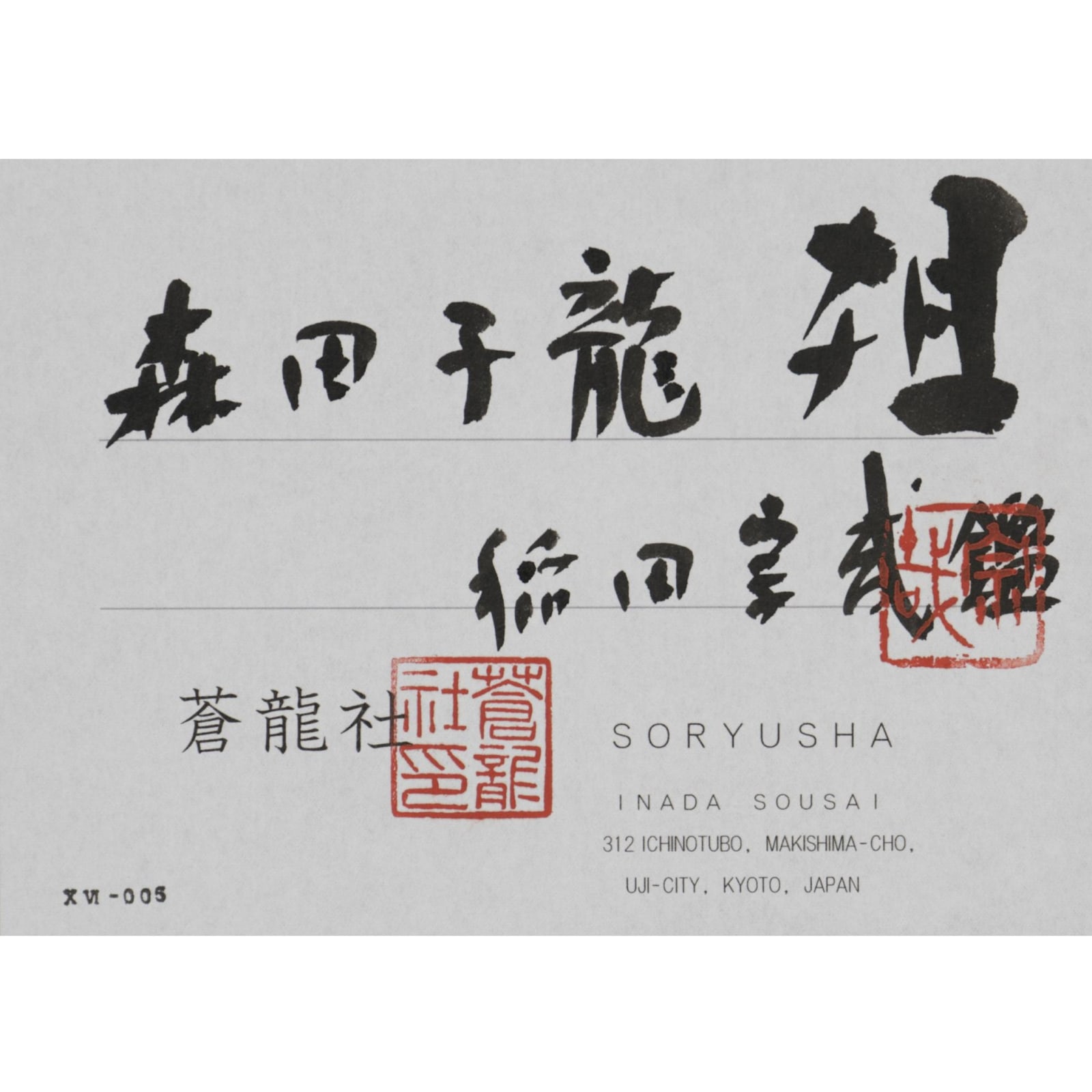Morita Shiryū (1912−1998)
Manaita (chopping board)
Ink on paper, framed
1963
With a label signed by Inada Sosai
Seal: Kiyoshi no ji
47.5 x 56.4 cm
49.5 x 58.4 cm (overall)
Further images
Morita Shiryu attempted to approach the art of sho both from a theoretical and aesthetic point of view, as well as an international and contemporary perspective. On the one hand, he invited the contribution of aesthetic and philosophy scholars to Bokubi, the sho journal established by he himself, and looked into the abstract art movements overseas on the other. In order to set free from the conservative calligraphy field, Shiryu criticized the sensibility-based traditional sho world, and broke away from his mentor and peers to cofound the avant-garde calligraphers’ group Bokujin-kai. The revolutionary road did not go flat, as the severe correspondence between Shiryu and his mentor Ueda Sokyu shows.
This single character sho, Manaita, was composed for Shiryu’s first solo show in New York in 1963, ten years after the founding of Bokujin-kai. The play of points and thick lines, as well as the different degrees of thickness in the applications of ink are notably interesting. In the 1963 catalog, the character is translated as “sacrificing board, chopping board, a dauntless attitude before criticism.” Manaita indeed expresses Shiryu’s determined, fearless posture in front of the harsh public condemnation towards him.
Morita Shiryu (calligrapher; 1912–1998)
Born in Hyogo prefecture. Studied calligraphy under Ueda Sokyu, and aspired to become an avant-garde calligrapher. Co-founded Bokujin-kai, and initiated and edited the Bokubi (The Beauty of Ink) journal, both of which had revolutionized the conventional thinking of the traditional Japanese calligraphy, and spread Japanese avant-garde calligraphy to the international audience. Designated as a Person of Cultural Merit in Kyoto City, and posthumously awarded a Medal with Dark Blue Ribbon.
This single character sho, Manaita, was composed for Shiryu’s first solo show in New York in 1963, ten years after the founding of Bokujin-kai. The play of points and thick lines, as well as the different degrees of thickness in the applications of ink are notably interesting. In the 1963 catalog, the character is translated as “sacrificing board, chopping board, a dauntless attitude before criticism.” Manaita indeed expresses Shiryu’s determined, fearless posture in front of the harsh public condemnation towards him.
Morita Shiryu (calligrapher; 1912–1998)
Born in Hyogo prefecture. Studied calligraphy under Ueda Sokyu, and aspired to become an avant-garde calligrapher. Co-founded Bokujin-kai, and initiated and edited the Bokubi (The Beauty of Ink) journal, both of which had revolutionized the conventional thinking of the traditional Japanese calligraphy, and spread Japanese avant-garde calligraphy to the international audience. Designated as a Person of Cultural Merit in Kyoto City, and posthumously awarded a Medal with Dark Blue Ribbon.







